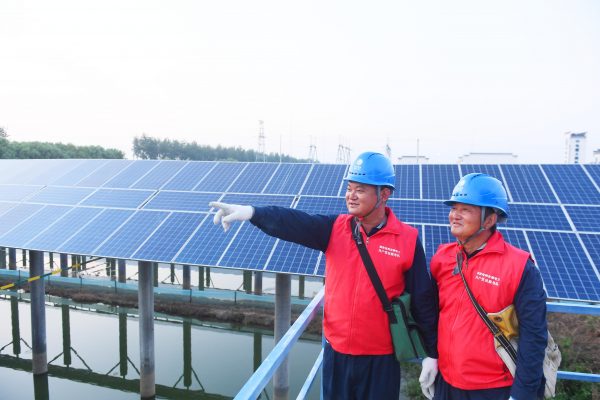This is not just a collective race against the climate emergency — it is now a green industrial revolution in which countries compete against each other for leadership of green technologies, industries and supply chains. The outcome of this race will decide the hierarchy of nation states within two decades. It is a battle for dominance over the future of the global economy.
The green tech race is accompanied by a conceptual shift. ‘Market fundamentalism’ is no longer seen as capable of delivering a structural shift in global industry in time to avoid the climate emergency — especially while carbon subsidies remain commonplace. That is why states are rejuvenating the old and new tools of industrial policy, such as solar tariffs and electric vehicle subsidies.
The world is witnessing a race by policymakers to re-engineer the relationship between markets and the state in green industries. Many countries are taking a strategic approach needed to extract and secure the rare metals needed for green technologies. A similar race is taking place in digital supply chains, in which increasingly high stakes have led states to intervene in markets in the name of national security, such as Washington’s new export controls against China’s semiconductor industry.
Renewable energy represented 29 per cent of global electricity sources in 2021, compared to 20 per cent in 2010. The share of hydropower declined from over 80 per cent of renewables to about 50 per cent. Half of this global increase, almost entirely driven by solar panels and wind turbines, took place in China, even though Beijing generates 60 per cent of its energy with coal. The United States and the European Union each accounted for 8 per cent of the increase.
Renewable energy capacity is expected to increase by over 8 per cent in 2022, with solar power accounting for 60 per cent of this increase. Given the global electricity target of achieving 60 per cent renewable energy by 2030, the International Energy Agency expects renewable energy capacity to increase by 12 per cent annually.
Electric vehicles (EVs), the key technology for decarbonising transport, had a record year in 2021. Global EV sales doubled to 6.6 million vehicles. Thirteen per cent of new cars sold globally were EVs in 2022. Thanks to generous tax credits and rebates, 50 per cent of EVs sold in 2021 were sold in China, 35 per cent in Europe and 10 per cent in the United States.
Lithium batteries are one of the core components of EVs. Over 50 per cent of the world’s lithium production comes from Australia, followed by Chile and China. But China and Chile account for 60 per cent and nearly 25 per cent, respectively, of the processing of lithium into batteries. China also leads the processing of critical minerals like copper, nickel, cobalt and rare earths. It accounts for over 85 per cent of rare earth processing, 65 per cent of cobalt and around 40 per cent of copper and nickel.
China’s 2012 commitment to the massive production of renewable technologies was seen by Beijing as a chance to combat climate change and, through strategic industrial policy, lead the post-industrial world of the 2030s. But other major players are catching up.
With state-driven support under the Inflation Reduction Act of 2022, the United States has promised US$700 billion in climate and energy investments, including loans and grants. The European Green Deal combines financial support and increased environmental regulations, while Japan has redefined national economic security to include digital and green tech with US$18 billion worth of research and development funding. South Korea’s Green New Deal, a techno-industrial transformation strategy, invests US$135 billion in green and digital tech. Meanwhile, India has invested in the solar industry.
China played a key role in triggering the race through its post-2012 subsidies and industrial policy that aimed to leapfrog other countries. It was only a matter of time before the United States took notice. The COVID-19 pandemic, the US–China trade war and the war in Ukraine have created concerns about the securitisation of technology and dependence on concentrated global supply chains, often located in rival economies.
Green technologies are taking off rapidly via aggressive investments in developed and developing countries. Global emissions increased by less than 1 per cent in 2022 due to the acceleration of renewable energies. But the global peak of carbon dioxide emissions is not a liberal market story. The green competition has become a matter of economic competitiveness and national security — reshuffling the winners and losers of the global economy over the next decade.
Sun Ryung Park is a PhD candidate in political science at the University of British Columbia, specialised in green technology policies. She is also a Liu Scholar (2021–22) and Centre for Korean Research Fellow (2021–23) at UBC.
Yves Tiberghien is Professor of Political Science and Director Emeritus of the Institute of Asian Research at the University of British Columbia. He is also a Distinguished Fellow at the Asia-Pacific Foundation of Canada.

